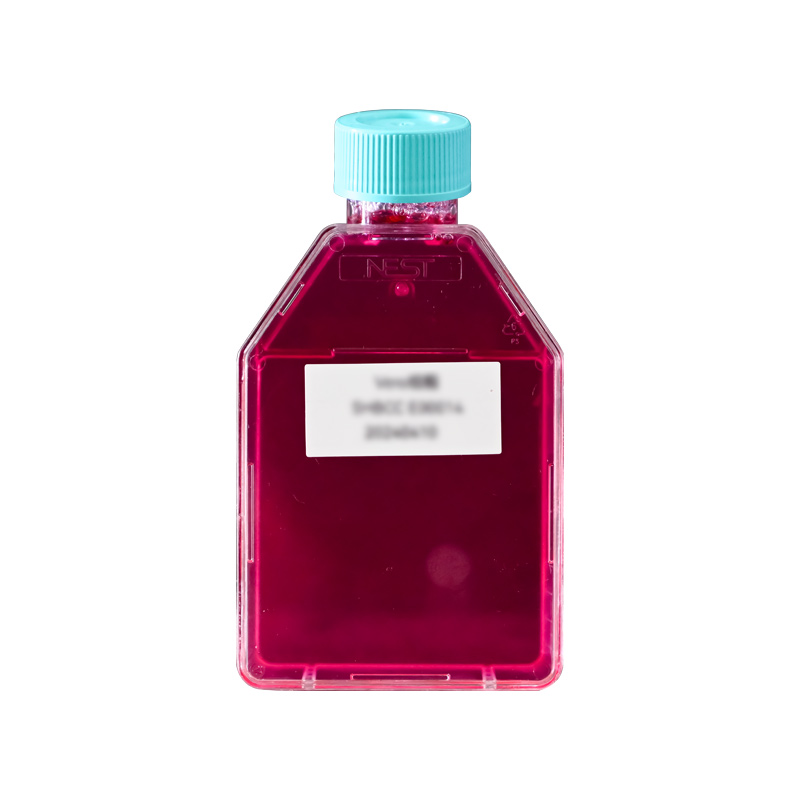小鼠睾丸上皮细胞15P-1,15P-1,SHMCC E00294返回上一页

小鼠睾丸上皮细胞15P-1,15P-1,SHMCC E00294
菌株编号:SHMCC E00294
中文名称:小鼠睾丸上皮细胞15P-1,15P-1,SHMCC E00294
拉丁名称:
价格:¥2000
状态:咨询客服
下载:
产品介绍
平台资源号:
保藏编号:SHMCC E00294
中文名称:小鼠睾丸上皮细胞15P-1,15P-1,SHMCC E00294
拉丁名称:
模式菌株:
其它保藏中心编号:
来源历史:睾丸
收藏时间:
参考用途:动物种类:小鼠组织来源:睾丸形态:贴壁生长性别:雄性,6月龄细胞描述:15P-1细胞来源于在生精上皮中表达多瘤病毒(PyLT)大T蛋白的转基因小鼠的睾丸细胞。该细胞表现出支持细胞(Sertoli cells)的特征,包括转录威尔姆斯肿瘤(WT1)和Steel基因。据报道,15P-1培养物呈现出吞噬活性,乳胶颗粒的内吞和死细胞的清除就证明了这个吞噬活性。与生殖细胞的相互作用增强了15P-1细胞的吞噬活性。与二倍体的减数分裂前期的生殖细胞共培养时,该细胞支持精
生物危害程度:
致病对象:
培养温度:小鼠睾丸上皮细胞15P-1完全培养基配方(100 ml):
DMEM (Invitrogen, 11960-044) 88 ml
FBS (Gibco) 10 ml
Glutamax (Invitrogen, 35050061) 1 ml
Sodium Pyruvate 100 mM Solution (Invitrogen, 113
需氧类型:气相:空气,95%;二氧化碳,5%。
提供方式:T25培养瓶,干冰冻存管(额外+150元)
保存温度:液氮
培养条件
小鼠睾丸上皮细胞15P-1完全培养基配方(100 ml):
DMEM (Invitrogen, 11960-044) 88 ml
FBS (Gibco) 10 ml
Glutamax (Invitrogen, 35050061) 1 ml
Sodium Pyruvate 100 mM Solution (Invitrogen, 11360070) 1 ml
气相:空气,95%;二氧化碳,5%。
温度:【32】摄氏度。
生物安全等级:BSL-1
参考传代周期:3-4天
参考传代比例:1:2~1:4
参考换液频率:每周2次
冻存液:培养液95%,DMSO 5%
参考文献
Paquis-Flucklinger V, et al. Expression in transgenic mice of the large T antigen of polyomavirus induces Sertoli cell tumours and allows the establishment of differentiated cell lines. Oncogene 8: 2087-2094, 1993. PubMed: 8393161 Rassoulzadegan M, et al. Transmeiotic differentiation of male germ cells in culture. Cell 75: 997-1006, 1993. PubMed: 7504588 Grandjean V, et al. Stage-specific signals in germ line differentiation: control of Sertoli cell phagocytic activity by spermatogenic cells. Dev. Biol. 184: 165-174, 1997. PubMed: 9142992 Grandjean V, et al. Antimicrobial protection of the mouse testis: synthesis of defensins of the cryptdin family. Biol. Reprod. 57: 1115-1122, 1997. PubMed: 9369178 Vincent S, et al. Stage-specific expression of the Kit receptor and its ligand (KL) during male gametogenesis in the mouse: a Kit-KL interaction critical for meiosis. Development 125: 4585-4593, 1998. PubMed: 9778516 Vidal F, et al. Gene trap analysis of germ cell signaling to Sertoli cells: NGF-TrkA mediated induction of Fra1 and Fos by post-meiotic germ cells. J. Cell Sci. 114: 435-443, 2001. PubMed: 11148144

 021-59199805
021-59199805


 集团咨询服务号
集团咨询服务号




